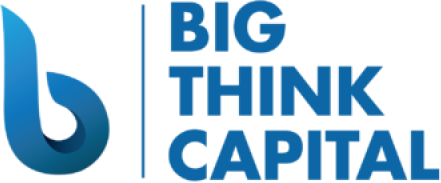Decoding the Federal Reserve Interest Rates Impact on Small Business Financing
Estimated Reading Time: 7 minutes
- Understanding the Federal Reserve’s role in setting interest rates
- Impact of recent interest rate changes on small business financing options
- Strategies for securing and managing loans in a fluctuating rate environment
- Importance of being proactive in financial planning
Table of Contents
- Understanding Federal Reserve Interest Rates
- Recent Trends in Interest Rates
- Impact of Recent Rate Changes on Small Business Financing
- Strategies for Small Businesses to Secure and Manage Loans Amidst Fluctuating Interest Rates
- Conclusion
- FAQ
Understanding Federal Reserve Interest Rates
The Federal Reserve, often referred to as the Fed, plays a pivotal role in setting monetary policy in the United States. Its primary responsibilities include managing inflation, maximizing employment, and stabilizing the financial system. The central bank achieves these goals through interest rate adjustments, particularly the federal funds rate, which influences borrowing costs across the economy.
Recent Trends in Interest Rates
In 2023, the Federal Reserve implemented a series of interest rate hikes in response to rising inflation, which reached a peak of 9.1 percent annually in June 2022 [source: Bureau of Labor Statistics]. As inflation pressures unwind, the Fed has been cautious in its early 2025 approach, aiming to balance economic growth with inflation control. Business owners should keep track of these trends, as they dictate the borrowing landscape.
Impact of Recent Rate Changes on Small Business Financing
The implications of interest rate changes are particularly relevant to small businesses exploring funding options. Here’s a closer look at how these rates impact various types of financing:
SBA Loans
SBA loans remain one of the most sought-after financing options for small businesses, thanks to their favorable terms and lower interest rates. However, as the Fed raises its rates, the cost of borrowing for SBA loans rises too.
- Current Interest Rates: As of early 2025, SBA loan rates are closely linked to the prime rate, which is directly influenced by the federal funds rate. Rates may now range from 6.0% to 9.5%, depending on the applicant’s creditworthiness and the loan amount.
- Strategic Timing: Applying for an SBA loan during periods of stable or declining interest rates can help secure better terms. With the Fed’s cautious approach, potential borrowers should keep an eye on rates and consider applying when rates stabilize.
Equipment Financing
Many small businesses rely on equipment financing to acquire essential tools and machinery. Changes in interest rates can significantly impact monthly payments:
- Financing Costs: Higher interest rates lead to increased monthly payments on financed equipment. This can strain cash flow and affect the ability to invest in other areas of the business.
- Leverage Tax Benefits: Equipment financing can come with tax advantages. Business owners should consult with tax professionals to understand how interest deductions can offset costs, especially during high-interest periods.
Merchant Cash Advances (MCA)
Merchant cash advances provide fast capital but come with higher effective interest rates:
- Cost Implications: MCA rates can sometimes escalate significantly in times of high-interest rates due to the risk associated with rapid repayment schedules. Business owners should evaluate their cash flow and repayment ability before opting for this type of financing.
- Alternatives: Businesses might consider alternatives, such as short-term loans or invoice financing, especially if they expect high revenue influxes to manage repayments more comfortably.
Lines of Credit
Business lines of credit are versatile financing options that allow businesses to draw funds as needed:
- Variable Interest Rates: Most lines of credit come with variable interest rates linked to the prime rate. If the Fed raises rates, the cost of borrowing on these lines increases.
- Optimizing Usage: Business owners should strategically use lines of credit for short-term funding needs, paying off balances swiftly to minimize interest costs, especially in a rising interest rate environment.
Strategies for Small Businesses to Secure and Manage Loans Amidst Fluctuating Interest Rates
In an uncertain economic environment, having a robust strategy for managing your business’s finances is essential. Here are some practical tips to consider:
1. Build a Strong Credit Profile
Maintaining a good credit score is critical, particularly when interest rates rise. Lenders become more selective, and a better score can help you secure favorable loan terms.
- Steps to Improve Credit: Pay your bills on time, keep credit utilization low, and regularly review your credit report for errors.
2. Diversify Financing Sources
Relying on a single source of financing can leave businesses vulnerable to economic shifts. Consider a mix of funding types:
- Examples: Keep a combination of loans, lines of credit, and cash reserves to provide flexibility and ensure you have options in various economic climates.
3. Work Symbiotically with Lenders
Building relationships with lenders can improve your chances of securing better terms during fluctuating interest rates:
- Engaging with Lenders: Regularly communicate with your lenders. Understand their offerings, ask for advice on navigating changes in interest rates, and discuss strategic repayment planning.
4. Monitor Economic Indicators
Stay informed about economic trends that influence interest rates:
- Sources for Updates: Utilize tools such as the Federal Reserve’s updates, economic journals, or economic news platforms to gain insights. This will aid in making timely borrowing decisions.
Conclusion
The ever-evolving landscape of interest rates poses unique challenges and opportunities for small businesses in 2025. Understanding the implications of Federal Reserve policies on SBA loans, equipment financing, merchant cash advances, and lines of credit is essential for making informed financial decisions.
By implementing the strategies outlined in this guide, business owners can optimize their loan strategies and position themselves favorably in a fluctuating interest rate environment.
At Big Think Capital, we are committed to helping small businesses navigate the complexities of financing and identify the best funding solutions tailored to their needs. If you are exploring your options for securing financing amidst changing interest rates, we encourage you to visit us at www.bigthinkcapital.com or speak with one of our funding experts today. Your business’s financial future awaits, and we are here to help you every step of the way.






